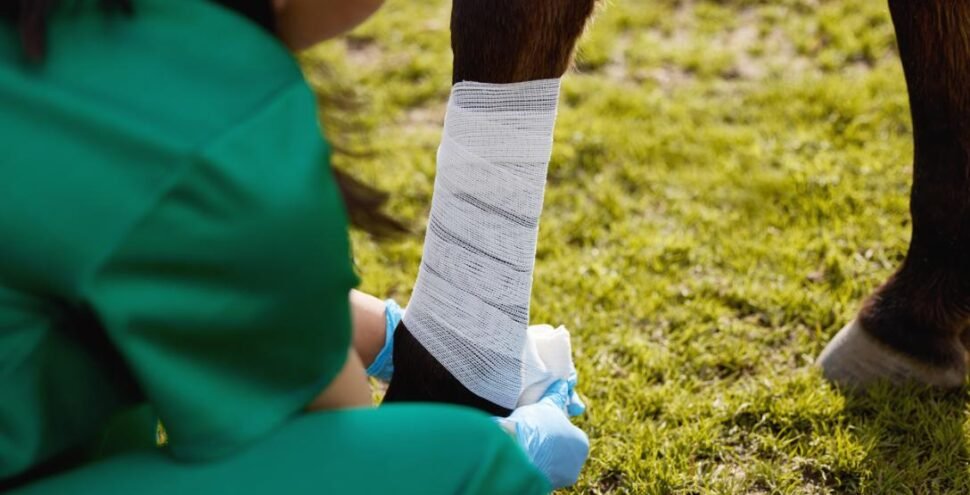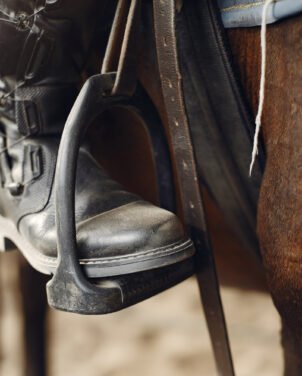Using horse bandages correctly is important for the health and comfort of our equine friends. Whether we are preventing injuries or aiding recovery, bandages can provide essential support. It’s crucial to know how to use them properly to avoid doing more harm than good.
Improper bandaging can cause discomfort, restrict blood flow, and even injure our horse. Knowing the different types of bandages and their specific uses is the first step. From polo wraps to stable bandages, each type serves a unique purpose and needs to be applied correctly.
In this guide, we will explore the types of horse bandages, demonstrate the steps for proper application, discuss common mistakes, and offer tips for maintenance. With the right knowledge, we can ensure our horses remain safe, comfortable, and healthy.
Understanding the Types of Horse Bandages
Knowing the different types of horse bandages helps us choose the right one for various needs. There are several common types, including polo wraps, standing bandages, and stable bandages. Polo wraps are often used during exercise to provide light support and protection against minor scrapes. They are soft, stretchy, and need to be wrapped carefully to avoid causing pressure points.
Standing bandages, also known as stable bandages, are used when a horse is resting in the stable. They help to reduce swelling and provide support for injuries. These bandages are thicker and usually paired with padding for extra protection. Lastly, there are shipping bandages, which are designed for travelling. They protect the horse’s legs from bumps and knocks during transport. Understanding these types and their specific uses ensures we apply them correctly for the best results.
Steps for Properly Wrapping Horse Bandages
Proper application of horse bandages is crucial for safety and effectiveness. Start by cleaning the horse’s leg to remove any dirt or debris. This prevents irritation and infections under the bandage. Use padding or leg wraps under the bandage to provide extra cushioning and prevent pressure points.
When wrapping, always start from the inside of the leg and work your way down to the cannon bone. Ensure the bandage is snug but not too tight. We should be able to fit a finger between the bandage and the leg. Overlap each layer by about half the width of the bandage to provide even support. Finally, secure the end of the bandage with tape or Velcro. Make sure the bandage is smooth and wrinkle-free to avoid discomfort. Properly wrapped bandages ensure our horse’s legs are protected and comfortable.
Common Mistakes to Avoid When Bandaging
Even with the best intentions, we sometimes make mistakes when bandaging our horse’s legs. One common mistake is wrapping the bandage too tightly. This can restrict blood flow and cause serious injury. Always ensure the bandage is snug but not overly tight. Checking if you can slip a finger under the bandage is a good way to test its tightness.
Another mistake to avoid is uneven wrapping. If the bandage is loose in some places and tight in others, it won’t provide proper support. Ensure each layer of the bandage overlaps the previous one evenly. Wrinkles and folds in the bandage can cause pressure points, leading to discomfort or injury. Always smooth out the bandage as you wrap it to keep it even and comfortable for the horse.
Tips for Maintaining and Storing Horse Bandages
Proper care and storage of horse bandages help maintain their effectiveness and longevity. After each use, wash the bandages to remove dirt and sweat. Use a gentle detergent and avoid bleach, as it can damage the fabric. Once washed, let the bandages air dry completely to prevent mould and mildew.
When storing bandages, roll them up neatly and secure them with a rubber band or Velcro strip. This keeps them from tangling and makes them easy to grab when needed. Store the bandages in a dry, cool place to prevent any damage. Proper maintenance not only extends the life of the bandages but also ensures they are always ready for use when our horses need them.
Conclusion
Wrapping horse bandages correctly is essential for the comfort and safety of our equine partners. Understanding the different types of bandages and knowing how to apply them properly can help prevent injuries and aid in their recovery. Avoiding common mistakes and taking care of the bandages ensures they perform well and last longer.
At Diamont Equestrian, we know how important it is to have reliable gear for our horses. Explore our selection of quality horse bandages to find the right fit for your needs. Visit Diamont Equestrian today to ensure your horse gets the best care and support on every ride.





